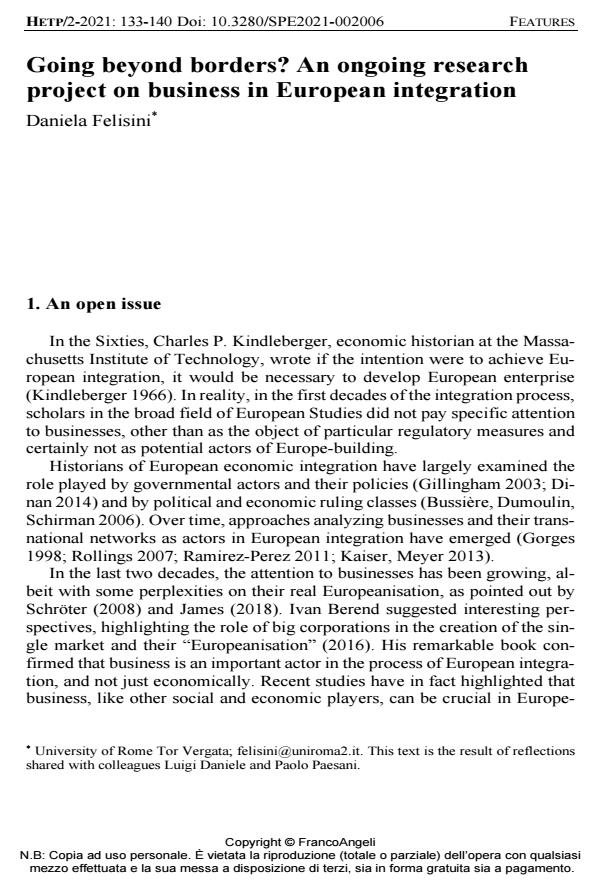Going beyond borders? An ongoing research project on business in European integration
Journal title HISTORY OF ECONOMIC THOUGHT AND POLICY
Author/s Daniela Felisini
Publishing Year 2022 Issue 2021/2
Language English Pages 8 P. 133-140 File size 34 KB
DOI 10.3280/SPE2021-002006
DOI is like a bar code for intellectual property: to have more infomation
click here
Below, you can see the article first page
If you want to buy this article in PDF format, you can do it, following the instructions to buy download credits

FrancoAngeli is member of Publishers International Linking Association, Inc (PILA), a not-for-profit association which run the CrossRef service enabling links to and from online scholarly content.
Daniela Felisini, Going beyond borders? An ongoing research project on business in European integration in "HISTORY OF ECONOMIC THOUGHT AND POLICY" 2/2021, pp 133-140, DOI: 10.3280/SPE2021-002006